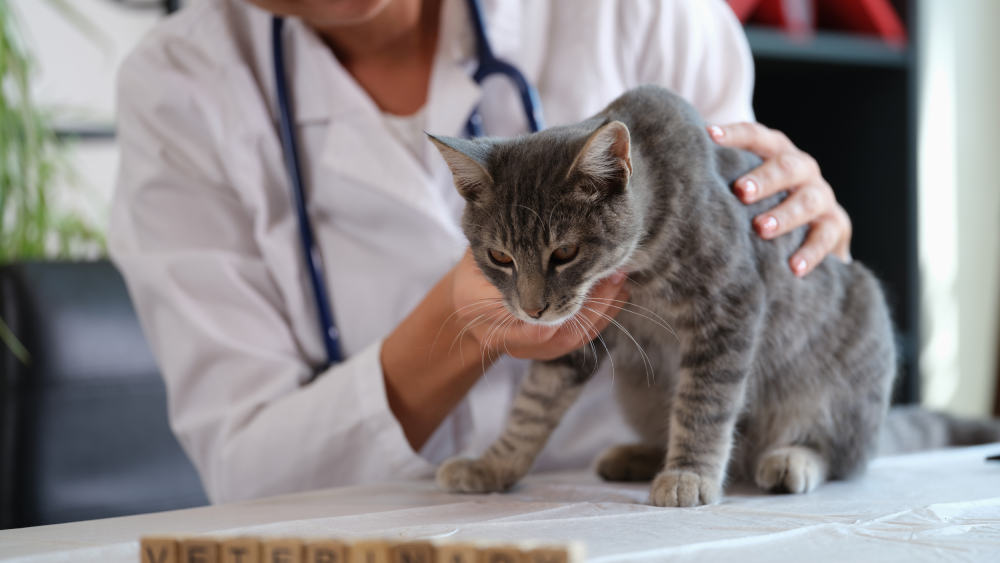Click to Skip Ahead
Medical advancements in the veterinary field tend to mirror those in the human world, albeit a few years later. One advancement that’s breaking through for our cats is stem cell therapy. This modality offers a great deal of promise, but as of now, you may have a hard time finding a veterinarian to do it. In fact, the AVMA recommends using caution when implementing stem cell therapy, but it does support further research in the area.1
So, what’s the big deal with stem cell therapy in cats and how can it benefit your feline friend? Read on to find out!

What Is Stem Cell Therapy in Cats?
Stem cells are undifferentiated cells that when placed in the right situations, can grow into specific tissues. You can think of these cells as skeins of yarn in a knitter’s hands. Each strand of yarn can become anything that the knitter wants to make it into, just like stem cells can form into any type of tissue that they are grouped with.
Stem cell therapy is the use of stem cells to regenerate diseased or injured tissues, such as tendons, ligaments, muscles, bones, and even nerves. As you can imagine, stem cells can become incredibly useful, as they’re sort of like the body’s way of making its own replacement parts that are more suited for it than synthetics or transplants from other animals.
As you can imagine, the sky’s the limit when it comes to using stem cells in cats—theoretically. Right now, their most common use is to help rebuild joints riddled with osteoarthritis, with some treatments showing promise to also help cats suffering from kidney and respiratory diseases.

How Is Stem Cell Therapy Done in Cats?
- Your kitty needs to be properly diagnosed and deemed an appropriate candidate. This just means that the ailment is identified and your cat is otherwise healthy. It also means that you, the pet owner, have the funding.
- Next, your cat will need to be anesthetized so fatty tissue or bone marrow can be collected. This is where the stem cells are residing, waiting for future orders.
- The fatty tissue will be sent to a specialized lab, where the stem cells are extracted, concentrated for use, and sent back to the initial veterinary hospital.
- The stem cells can then be injected into the affected site—for example, into the knee joint. This can be painful, so anesthesia is typically used.
- Cats can then go home with minimal aftercare while the stem cells get to work: dividing, growing, and creating new tissue. Some kitties may show signs of improvement within a couple of days, while others may take a few weeks.
Potential Side Effects of Stem Cell Therapy in Cats
While stem cell therapy might be the wave of the veterinary future, it’s crucial to know that side effects can occur and it’s not for every feline patient. Some animals receiving stem cell therapy may experience:
- Pain, discomfort, or infection at the injection site
- Joint swelling
- Worsening lameness (in the case of joint injections)
- Nausea, vomiting
There has also been a case of a dog experiencing graft-versus-host disease after stem cell therapy.
Side effects may be reduced by using the proper technique for collecting and injecting the stem cells and ensuring that the patient is as otherwise healthy as possible to best endure anesthesia and recovery.

Frequently Asked Questions
How Long Does It Take Stem Cell Therapy to Work in Cats?
Depending on the condition being treated, some cats may show improvement of signs within a couple of days. Others may take a few weeks to feel better. This means cats with osteoarthritis may have decreased lameness and less pain quickly, while cats with kidney disease may take a couple of weeks before they start drinking less water.
How Much Does Stem Therapy Cost?
There’s variation in costs for stem cell therapy, depending on where you live, whether you have to go to a specialist, and what condition you’re treating. With this in mind, most of the time, stem cell therapy is going to cost upward of $2,000–$3,000 or more.
What Are the Downsides to Stem Cell Therapy in Cats?
Right now, the biggest downside to stem cell therapy in cats is that we don’t have a complete handle on it yet. Most of the uses are still in the experimental phase, but we are getting good results from the most common utilizations. Of course, there is also the cost and availability of it to consider.

Conclusion
Stem cell therapy is a medical advancement that is making its way through the veterinary world. It has the potential to help with the treatment of many common diseases of cats, including osteoarthritis and kidney disease. We still have a ways to go, however, before stem cell therapy becomes mainstream and makes its way into even the small veterinary clinics.
Featured Image Credit: Gorodenkoff, Shutterstock











